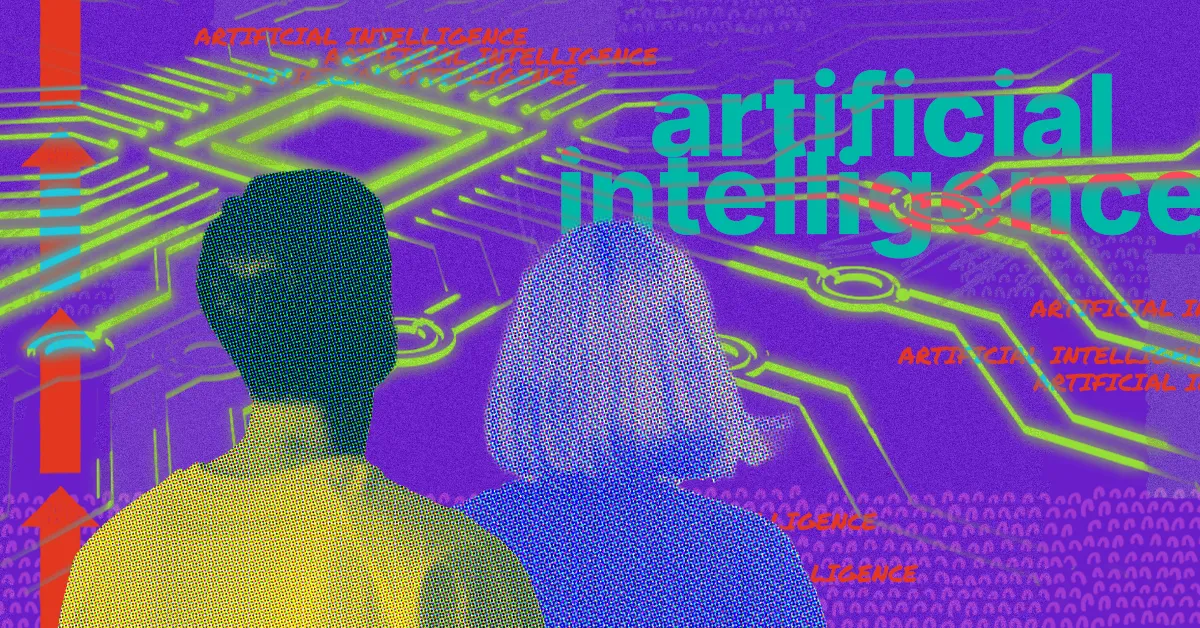If you spend any time on LinkedIn, it can feel like AI is coming for your lunch — fast.
Posts like “I used AI to do a task in 10 minutes that would take my direct report 10 days,” and “Tell me why we’re still hiring testers when AI can find bugs faster” are everywhere.
And it’s not just LinkedIn chatter. Since ChatGPT burst onto the scene in 2022, the headlines have gotten very bleak.
But here’s the thing: while AI is going to take some jobs away, it’s not all doom and gloom.
AI-related skills are already in high demand, and if you can hop on that train early — or switch to a career path that’s more AI-proof — you’ll be ahead of the game.
Below, we share the state of things today: why and how AI is changing the SaaS landscape, which jobs are slowing down and key ways you can adapt in this ever-evolving world of technology.
Why some SaaS roles are becoming obsolete
There’s never been a time when companies weren’t trying to do things cheaper and faster. Before, that meant hiring offshore workers and budget cuts. Today, it means using artificial intelligence.
This shift is hitting entry- and mid-level SaaS roles especially hard. According to LinkedIn’s chief economic opportunity officer, Aneesh Raman, AI is breaking the bottom rung of the career ladder, eliminating job opportunities for people looking to break into tech.
“Our research suggests that professionals with more advanced degrees are more likely to see their jobs disrupted than those without. The technology sector is feeling the first waves of change, reflecting AI’s mass adoption in this field," says Raman.
The reality is that AI is becoming really good at a few things, and that’s what’s driving changes in the job landscape. Here’s a list of roles that are on the decline.
See more: Partnerships jobs that pay over $75K.
Declining SaaS job titles in 2025

Customer and IT support representatives
AI’s ability to understand customers’ problems — and respond to them — has gotten a lot better over the past few years. LLM-based customer service tools can read emails, pull important data from receipts and interpret screenshots, then compile notes for agents, draft replies and even resolve simple tickets.
Internal IT support bots can now answer questions beyond regular FAQs by scanning your intranet, Confluence, Coda and Google Docs and referencing old chats that happened between humans.
Gartner predicts that by 2026, investments in generative AI will result in a 20 to 30 per cent reduction in customer service and support agent positions.
But not all customer (or internal) service can be handled by robots. In 2024, Klarna CEO Sebastian Siemiatkowski famously said AI was doing the work of 700 customer service agents. Now, they’re hiring people back due to quality issues.
Manual QA testers
Advances in testing automation tools mean companies need fewer human testers. As part of its 2023 layoff, job platform Indeed eliminated the QA role entirely. Other companies may not be acting this drastically, but many employers are prioritizing testers who can write code to automate testing pipelines.
Letting AI do the “easy testing” may be the first sign of a transition from people engineers to machine learning engineers — something Mark Zuckerberg has discussed and seems to be planning based on his recent hires from OpenAI.
Data entry specialists
Clerical jobs, which involve routine, rules-based tasks like transcribing info from one system to another, are exactly the kind of work ripe for robotic process automation (RPA) and AI.
In fact, the US Bureau of Labor Statistics predicts that word processors and typists, data entry keyers, file clerks and payroll and timekeeping clerks will decline between 15 and 38 per cent by 2033.
If you scan the market, you can already see this happening with the proliferation of AI transcription services and OCR tools. Plus, almost every tool you use on a daily basis has some form of workflow automation built into it, whether it’s pinging you or a teammate on Slack, categorizing expenses or flagging report anomalies.
You might also like: Jobs that are growing with the rise of AI.
Basic business and data analysts
Analysts who prepare reports, track KPIs or do any kind of routine data analysis are in a vulnerable spot. Before, they might spend hours compiling data, building dashboards or slide decks and answering routine business questions.
Now, anyone can dump a large dataset into ChatGPT and ask it to find patterns and make suggestions on what to do next.
That said, LLMs hallucinate, so there will be a need for fact-checking. Even the folks at Zoho, who sell a whole analytics suite with AI features, say, “Data is essential for informing business decisions, but emotional intelligence and responsiveness are equally important in decision-making.”

Smart ways SaaS professionals can adapt
Though your job may not be on the list of those declining right now, it could be in the future. Here are some ways to prepare yourself and future-proof your skillset.
Assess where you’re at
A good way to calm your nerves (or give you the kick in the pants you need) is to examine how at risk your job really is.
Personal Math, a Substack that publishes frameworks for making high-stakes professional decisions in your 30s, suggests a way to benchmark AI to your most valuable output:
- Figure out what you consider your highest-value work output, like data analysis, content strategy or customer success.
- Test the very best AI tools to see if they can come close to what you do. “Be rigorous. Don’t use ChatGPT once and give up. Try a variety of tools, and try them together (e.g., DeepResearch + GPT 4.5 for competitive industry analysis).”
- Rate the quality on a scale from 1-10.
- Compare that rating to your own work. “Be brutally honest – if AI is at a 6 out of 10 compared to your 9 out of 10, that gap is closing fast.”
- If AI is at least half as good as you, you need to start redefining your role.
If it’s not, continue running this exercise every quarter to gauge where you’re at. The more information you have and the more realistic your expectations are, the faster you can move in a different direction.
Work at an AI-native company
This may seem like a really good way to accelerate the demise of your career, but it’s actually the opposite. Learning how to embrace AI — really, really embrace it — will clue you in to where the future of work is going and how to stay at the bleeding edge.
Elena Verna, who recently became Head of Growth at Loveable (a tool that allows users to build apps and websites by chatting with AI), shared the difference she’s noticing between employees who work in traditional SaaS and those who work at AI-native companies:
“AI-native employees simply default to solving *everything* with AI. It’s embedded in every part of their workday. Need to ship a site? Sure. Design creative? Here it is. Write a copy? How about this. Create a prototype? Hold my beer. Automate internal workflow? Gimme an hour.”
She goes on to say that, because of the way AI-native employees work, orgs will eventually shift in how they operate, using flatter teams, shipping new features faster and giving everyone autonomy to get things done.
The key, though, is to find and get into one of these places early. Verna warns, “Most companies aren’t built for these people. Rituals, processes and layers of approvals will stop them in their tracks. AI-transformation will leave a bloodbath in its wake.”
Read more: The best tech jobs for you based on your zodiac sign.
Learn some new skills
The demand for artificial intelligence jobs and skills has skyrocketed. In the past year, Jobs For the Future found that job postings mentioning AI have surged by 108 per cent. To make yourself a more well-rounded hire for a more AI-native workplace, you could:
- Get better at prompt engineering: Master a skill that everyone needs in the age of AI. Find LinkedIn influencers or podcast episodes with guests who really know their stuff (like this episode of Lenny’s Podcast) and try putting a few of their tips into practice each day.
- Up your data science skills: This can make you a more discerning and strategic leader, helping you verify AI outputs and make better decisions based on the results.
- Get on a project that involves AI integration: If your company is building an AI feature, figure out a way to contribute — that’ll help you do some AI research, learning how others in your industry are using AI in their day-to-day.
If you want more ideas, ask ChatGPT or Claude what courses to take and where to take them. And if you really want to “prove” that you have those skills and back up your resume, narrow down the list to courses that have digital credentials, like Accredible or Credly.
Look for an apprenticeship
If you’re newer to the SaaS world, the best way to integrate yourself without having to scour the job boards for any remaining entry-level roles is to learn from someone else. A recent Topline by Pavilion post presented apprenticeships as one of the best ways to address the shortage of jobs displaced by AI.
“When industrialization threatened the craft guilds, Germans created apprenticeships — young workers learned by doing, earned while learning and emerged as masters. IBM gets this. While other tech giants slash entry-level roles, IBM runs paid apprenticeships. 12 to 24 months. Software engineering, cybersecurity, data science. No degree required. Their retention rate? 96 per cent.”
Forward-thinking learning and development folks: pay attention. Starting one of these programs can be a huge boon for your company (and your own career).
Switch roles
If your role is being threatened by AI, it may be time to rethink your career — and that could mean pursuing jobs outside of SaaS. Plenty of other industries are looking for people who have marketed, shipped and supported digital products before.
Curran Clark, founder of ContractorNerd.com, shares: “I’m actually seeing a reverse trend where traditional industry professionals have to adopt SaaS mindsets. We’re hiring SaaS developers and product managers to help us build tools our contractor clients actually need. Convergence is happening from both directions. SaaS pros are entering traditional industries, and traditional businesses are becoming software builders.”
If you’re not looking to get out of SaaS right away, consider freelancing. Many teams have downsized due to AI, and while AI technology can certainly help them accomplish most of what they used to get done with more people, there are still gaps they need to fill.
As one r/SaaS Redditor put it in r/SaaS: “People are hiring much more gig workers to do things that used to be done by full-time employees for both cost and efficiency reasons.”
It’s a good time to be a freelancer, and it gives you the power to decide when and how you experiment with AI. Freelancing also allows you to work with and learn from AI-forward companies, and even get to try out their tools from time to time.
Brush up on your soft skills
There’s one thing AI will never be: a human. Creativity, intuition, emotional intelligence, social awareness — these are all things that AI might get close to replicating, but won’t ever get 100 per cent correct.
Someone has to take what AI has done and translate it into something special that other humans connect to. That’s why higher-level strategy, leadership and other soft skills are in such high demand. Redditor hungaryforchile put it eloquently:
“Learning how someone from a totally different culture sees the world, how they consider problems (and what they consider to be problems in the first place) and developing wholly original ideas for creating art and developing solutions to wicked problems, is what I think will keep human workers from becoming obsolete. Wholly new, radically different thinking and ideas will become highly valuable in a world where AI can take readily-known knowledge and ideas and blend them into something [only] kind of new.”
And guess what? The numbers reflect this way of thinking. The World Economic Forum found that, in roles that were once less likely to value human skills, the importance of these specific skills has grown by 20 per cent since 2018.
Getting really good at social media, considering non-remote work, putting yourself out there for a management-level role or even relocating to a different country and immersing yourself fully are all ways to develop these skills that will set you apart.
Stay agile, stay relevant
There’s a lot of uncertainty right now, and that can feel scary.
But the smartest move you can make is to keep learning. Being proactive about where you’re taking your career now can mean ending up right where you want to be later.

















